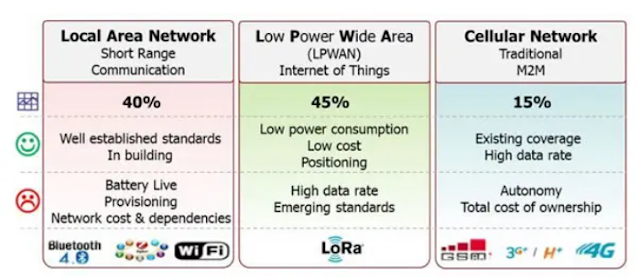Long-Range Low-Power End Node Solution

With the growing Internet of Things, a LoRa® technology wireless solution to address increasing demands on end-devices for long range connectivity, low-power for battery operation, and low infrastructure cost for volume deployment were now easy to acquire. LoRa technology solution mostly are ready to run out-of-the box and with the complete LoRaWAN® protocol and certifications in place, it reduces time to market and saves development costs. LoRa technology is ideal for battery-operated sensor and low power applications, including: Internet of Things Smart agriculture Smart city Sensor networks Industrial automation Smart meters Asset tracking Smart home M2M
